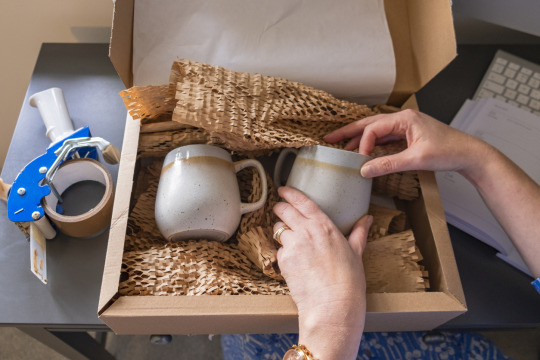Are you wrapping right?
A look at packaging trends in 2022
As we rip open the parcels brought to
our door almost daily by delivery drivers, we probably give little thought to
the box or wrapping paper. Yet the global packaging industry is enormous, with
world demand predicted to reach $1.05 trillion by 2024.
Packaging has a huge part to play in
protecting products for storage, sale and shipping. For major companies, it is
also integral to their brand image and customer promise. But while the growth
in this industry is fuelled by consumer and industry trends, the overarching
influencer is the change from bricks-and-mortar stores to e-commerce.
Here, we take a look at the key trends
in packaging for 2022.

Digital printing
Digital printing is revolutionising
the way physical product packaging is designed as well as the way the images or
graphics on the packaging are created. It allows for greater personalisation
and customisation options than were possible with mechanical processes like
typesetting. In fact, such is the influence of digital printing that hardly any
packaging companies still use traditional methods.
Digital print technology allows all
colours to be printed in a single pass, which has fuelled the growth of ‘printing
on-demand’ – a trend that shows no sign of abating.
Personalised packaging
If you managed to get a can of Coke
with your name on it when they first appeared in 2013, you were part of the
trend for personalised packaging that many brands believe is a valuable tool in
their tactical marketing armoury.
The ability to use digital print to customise
or personalise packaging and products is still having a major industry impact
in 2022. Many leading brands have reported a significant return on investment
on personalised packaging, with most believing it has a strong influence on
their customers.
Because
it is infinitely variable, customised packaging can be exploited by companies as
an extension of their brand story, and digital printing makes it affordable –
so seasonal trends, brand collaborations and promotional initiatives are easy
to accommodate. Expect to see more of this in coming years.

Clear and clean
labelling
Labelling is
undergoing its own revolution, as consumers demand more and better information
about what’s in their product choices. They want manufacturers to be
transparent about what the products contain, and they want to be sure the
ingredients are ‘clean’ – meaning that they don’t contain harmful ingredients.
Companies
have embraced transparent labelling because the more open they are with their
customers, the more their brand is trusted. This is particularly important in
the food sector, with consumers now regularly scanning packages with their
smartphones to find out exactly what they contain. This trend will remain
strong in 2022, with consumers more likely to buy a newly launched food product
that has clear and easily accessible product information.
Growth in
flexible and recyclable packaging
The move
towards flexible packaging material continues, with wraps, bags, pouches and
envelopes gaining ground on hard materials. Easier to store, close and reseal;
lightweight, kinder to the environment and better suited to e-commerce,
flexible packaging’s growth is due in part to the fact that it is now much more
planet-friendly.
If
manufacturers aren’t convinced by the ecological advantages of recyclable
packaging, however, they may soon be persuaded by financial penalties. Retail
giant Amazon requires its vendors to meet waste-efficient packaging standards
or pay a per-package penalty. Others are bound to follow suit. This is
important for marketers as well as anyone responsible for logistics: consumers
feel better about brands whose packaging does not damage the environment.
This brings
us back to e-commerce. According to a report from Statista, in 2021 retail
e-commerce sales amounted to 4.9 trillion US dollars worldwide. This figure is
forecast to reach about 7.4 trillion dollars by 2025, so it’s no surprise that
specialised e-commerce packaging is trending. And as ‘unboxing’ videos continue
to fuel shoppers’ obsession with online purchases across the world, who would ever
have thought that packaging itself could be the star of a social media trend?